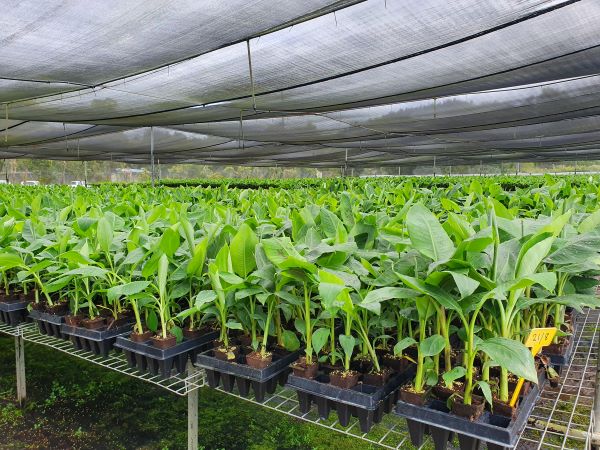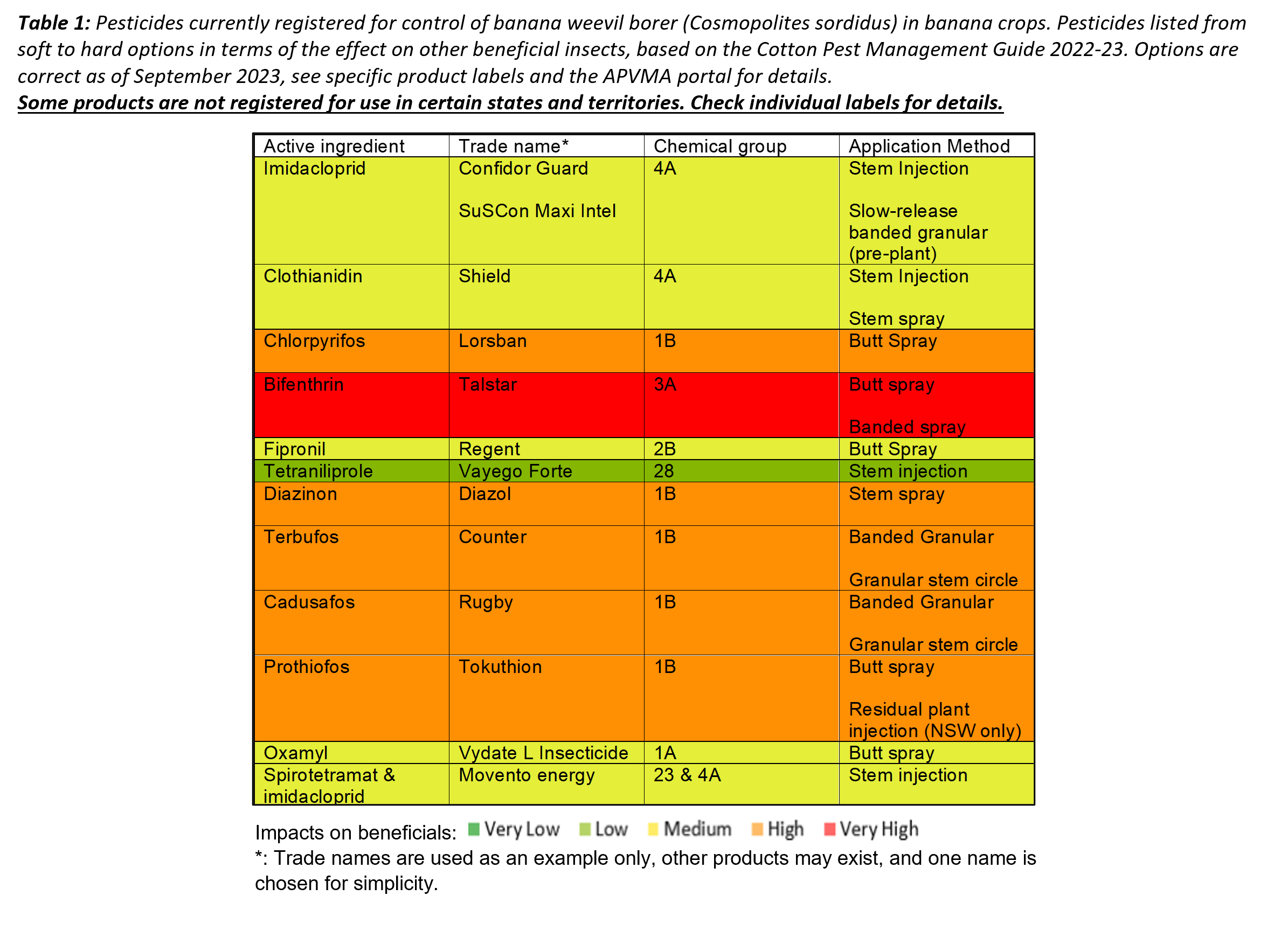Banana weevil borer Cosmopolites sordidus
Management
Cultural
The use of clean (banana weevil borer-free) planting material and maintenance of trash and weed-free areas near plants are two important factors in reducing the impact of this pest in bananas. Ideally, planting material should be obtained from an accredited QBAN nursery. If you are unable to use tissue culture the next best option is to use planting material from your own farm that is sourced from a block that is clean from pest and disease.
When planting into old banana land, allow at least six months of fallow after all old banana material has rotted down. This will help to prevent a carryover of weevil borer adults. Cut up all fallen and harvested pseudostems to prevent banana weevil borer breeding. This is particularly important in subtropical regions where drier, cooler conditions result in slow breakdown of plant material. Glyphosate injection for crop removal is encouraged to ensure adequate plant destruction to reduce weevil population levels.


Biological
A large range of general predators including flatworms, ants, beetles and cane toads assist in reducing banana weevil borer numbers. Research is being undertaken to determine the effectiveness of insect parasitic nematodes, which could prove suitable as biological control agents for banana weevil borer control.
Some international research, and research in NSW have shown some success using laboratory assays of entomopathogenic nematodes, Steinernema spp. and Heterorhabditis spp. However, to date, Queensland-based research has been unable to replicate positive results in the field, instead showing no difference between treated plants and untreated (control) plants, indicating that more in-field research is still needed.
Initial research in Australia shows that some insect diseases (entomopathogens) such as the fungus, Beauveria bassiana, have the capacity to reduce banana weevil borer populations, but more research is still needed.
Chemical
If the average banana weevil borer counts from bait trapping are more than two per trap (subtropics) or more than four per trap (tropics), registered chemical treatments should be applied according to label directions. If average counts are less than these, treatment is not considered necessary. Pheromone trapping doesn’t currently have a threshold value.
When choosing a chemical, it is essential to consider the life stage and behaviour of the banana weevil borer. The adults typically move around corms during spring and autumn to feed and lay eggs. To achieve optimal control, it is recommended to apply chemicals during these peak activity periods, using banded or butt spray applications that apply insecticides adjacent and/or onto the plants . By comparison, injection treatments aim to control larvae within the corm and therefore may have more flexibility in when they can be applied. However, some of these chemicals should not be applied during the dry season, as these chemicals have shown an increased incidence of mite flares. Always check the product label for guidance.
Chemical options are generally older chemistries that are disruptive to integrated pest management and/or other insects present throughout blocks. When trying to control banana weevil borer, certain chemicals have been known to cause mite flares. Therefore, it is crucial to only use spray treatments when the infestation has reached critical levels. Insecticide resistance is a threat with current options available, so chemical choices and modes of action should be rotated to reduce the risk of resistance. Always check the APVMA website for current chemical registrations before use. All chemical applications should be made according to the directions on the label. Resistance management plans should be followed to reduce insecticide resistance risk, see CropLife plans here.

For more information contact:
The Better Bananas team
Department of Agriculture and Fisheries
South Johnstone
07 4220 4177 or email betterbananas@daf.qld.gov.au
This information is adapted from: Pinese, B., Piper. R 1994, Bananas insect and mite management, Department of Primary Industries, Queensland and Treverrow, N., Pearley D., and Ireland, G 1992 Banana weevil borer : a pest management handbook for banana growers. NSW Agriculture, North Coast Region; NSW Banana Industry Committee; Horticultural Research & Development Corporation.
This information has been updated as part of the National Banana Development and Extension Program (BA19004) which is funded by Hort Innovation, using the banana industry research and development levies and contributions from the Australian Government. Hort Innovation is the grower-owned, not-for-profit research and development corporation for Australian horticulture. The Queensland Government has also co-funded the project through the Department of Agriculture and Fisheries.


